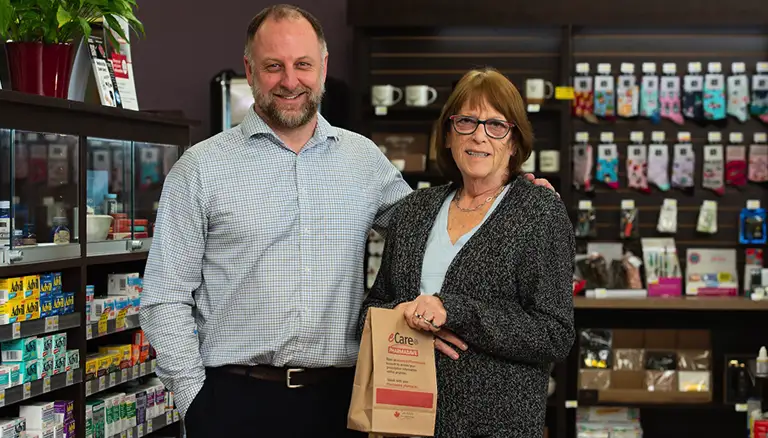
When Ontario pharmacy owner Mike Cavanagh pioneered an appointment-based model of practice in 2018, which is anchored by the synchronization of chronic medications to facilitate quarterly follow-ups with patients, little did he know he would be ramping up the model to new heights during the COVID-19 pandemic. The approach served him well for scheduling vaccinations as well as offering virtual appointments.
With the advent of pharmacists’ authority to assess and prescribe for minor ailments in Ontario, Cavanagh is examining how best to integrate this service as well. He considered two options: a “pseudo walk-in clinic” that would adapt the appointment-based model by blocking off windows of time for assessments, or the incorporation of assessments into the daily workflow.
He opted for the latter to start and so far, several assessments per week have been “manageable,” says Cavanagh, who owns Kawartha Lakes Pharmacy in Lindsay, Ont., as well as three other pharmacies in the area. The service has been very well received, both by the pharmacy team and by patients. “Patients love having access to it, and the pharmacists love to do the added scope,” he says.
With the expected expansion of eligible minor ailments from 13 to 19 and growing acceptance by patients, Cavanagh recognizes that incorporating assessments into the daily workflow may not be sustainable. “I think that eventually, from an efficiency standpoint, we’re going to want to get to the point where patients with a minor ailment know that they must come in during a certain block of time.”
Down the road, he hopes to offer the service virtually as well, “but we didn’t want to put too many things on too many pharmacists and other support staff.” Incorporating new services is an ongoing challenge, admits Cavanagh. “The biggest hardship is always sufficient personnel, especially with services like the appointment-based medication reviews,” he says.
Remuneration is also a challenge. While annual medication reviews are publicly funded, the pharmacy can’t bill the government for all the quarterly follow-ups that studies of the appointment-based model have found to be key to optimizing adherence and outcomes. “The problem that we faced initially was how to build that in, knowing that it’s unfunded.” One solution has been in having the pharmacy team discuss other healthcare services during these reviews, such as vaccinations that may otherwise be missed.
A major outstanding hurdle is fully incorporating registered technicians into the pharmacy workflow. Cavanagh predicts it will take another year or two to overcome that hurdle. He adds there are some limitations with physical space, as well as in adapting the pharmacy software. With time and small incremental changes, however, he believes these can eventually be overcome.
Progress is being made. For example, his pharmacy team, comprising four technicians, four assistants and four pharmacists, including himself, has developed a winning system for the estimated 10 per cent of patients using blister packs. “We have a registered tech who manages the blister packs so pharmacists don’t have to do the technical check on them, just the therapeutic check,” he says. The intent is to better integrate technicians into services for non-blister-pack patients as well.
While having a dedicated pharmacist who could assess two or three minor ailments an hour might provide a return on the cost of the pharmacist, it doesn’t cover the cost of the room, the technology and all the support staff, says Cavanagh. “So, it’s hard finding out how that model really works efficiently and basically funds itself so that you can dedicate personnel to it.” Cavanagh takes advantage of technology to improve efficiency, particularly out-of-the-box tools specific to services such as appointment bookings (MedEssist), travel medicine (Shoreland) and minor ailments (MAPflow).
In the end, it’s all about enhancing patient care, and that’s where these services pay off. “I’m a strong believer that the best way to grow a pharmacy clientele is to just provide good service,” Cavanagh says, pointing to growth across his pharmacies over the last few years in tandem with appointment-based medication management and vaccinations. “I feel that those services have been a big driver in the substantial growth that we’ve had over the last few years,” he says. Looking ahead, the goal is to enhance the services the pharmacy currently offers before adding any more. “How do we take the core services that we have now and make them better?” he muses. “We want to be the gold-service provider of all these services. Once we get to that point, we’ll look at expanding in other areas.”
Summary of action tips to optimize workflow
As part of its annual Changing Face of Pharmacy report, the Canadian Foundation for Pharmacy...
The federal and provincial governments have enacted a wide range of temporary laws, regulations...